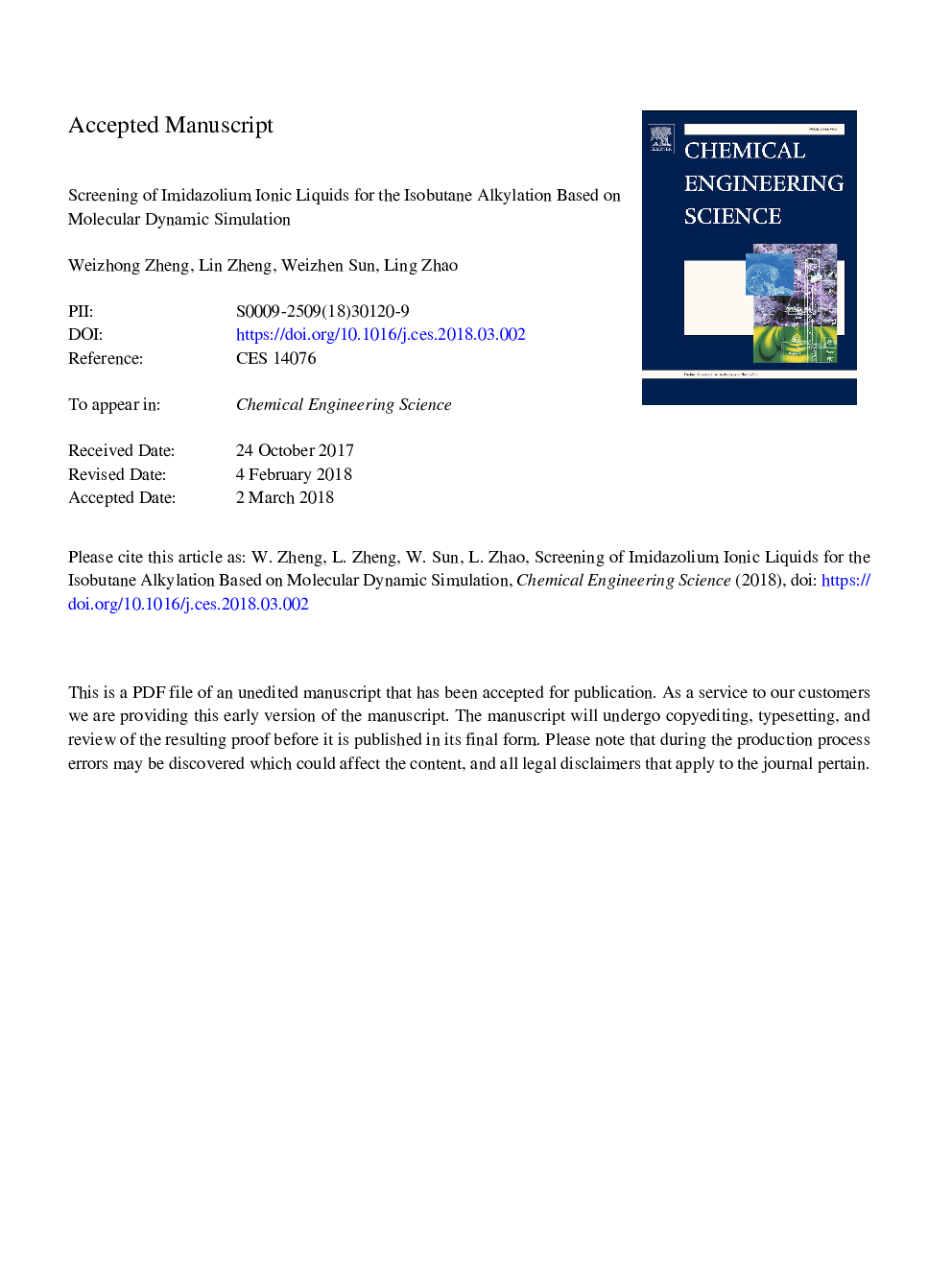| Article ID | Journal | Published Year | Pages | File Type |
|---|---|---|---|---|
| 6588549 | Chemical Engineering Science | 2018 | 38 Pages |
Abstract
In the liquid/liquid reaction of isobutane alkylation with C4 olefins, the solubility and diffusion properties of isobutane in catalyst phase exert substantial effect on the quality of alkylate. The solubility, diffusion, and permeability of isobutane and 2-butene in the 1-alkyl-3-methylimidazolium ionic liquids (ILs) with various anions including [BMIm][PF6], [BMIm][BF4], [BMIm][Tf2N] and [BMIm][Al2Cl7], and other ILs with different alkyl chains length including [BMIm][AlCl4], [HMIm][AlCl4] and [OMIm][AlCl4], as well as the H2SO4, were investigated using molecular dynamic simulation. Compared to H2SO4, the ILs were more favorable for the dissolution and diffusion of isobutane. The predicted isobutane solubility in ILs follows the order of [BMIm][Al2Cl7]â¯>â¯[BMIm][AlCl4]â¯>â¯[BMIm][Tf2N]â¯>â¯[BMIm][PF6]â¯>â¯[BMIm][BF4] for ILs with different anions, and [OMIm][AlCl4]â¯>â¯[HMIm][AlCl4]â¯>â¯[BMIm][AlCl4] for ILs with different alkyl chain length. The higher solubility of isobutane can be ascribed to the weaker cation-anion interaction, lower solubility parameter, and larger free volume. The isobutane diffusion follows the same trend as solubility for ILs with different anions, but opposite trend for ILs with various alkyl chain length. 2-butene shares the similar trend as isobutane, but shows a higher solubility and diffusion. In addition, isobutane and 2-butene permeability in ILs was estimated based on the solvation-diffusion mechanism. This work may help us better understand the structure-property of ILs for isobutane solubility and diffusion, and further provides new insights into the screening and design of novel ILs for the isobutane alkylation.
Related Topics
Physical Sciences and Engineering
Chemical Engineering
Chemical Engineering (General)
Authors
Weizhong Zheng, Lin Zheng, Weizhen Sun, Ling Zhao,
